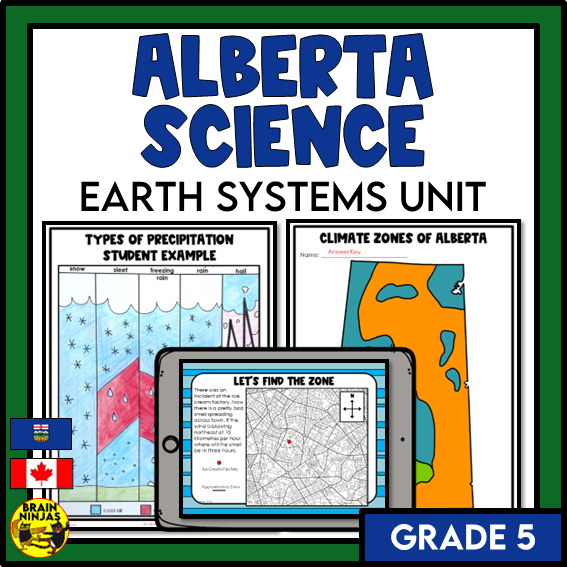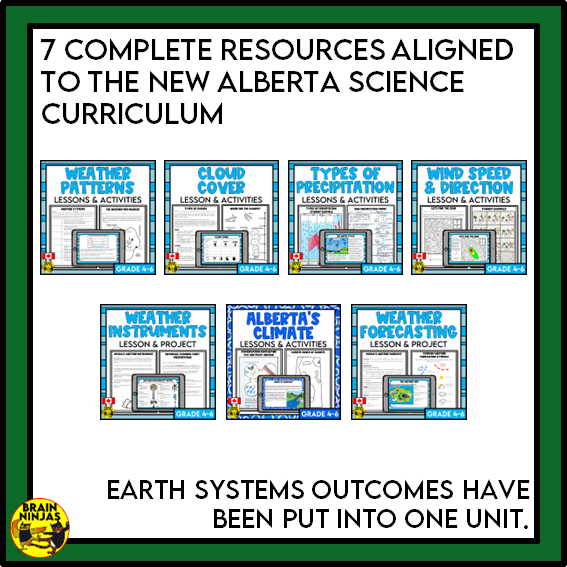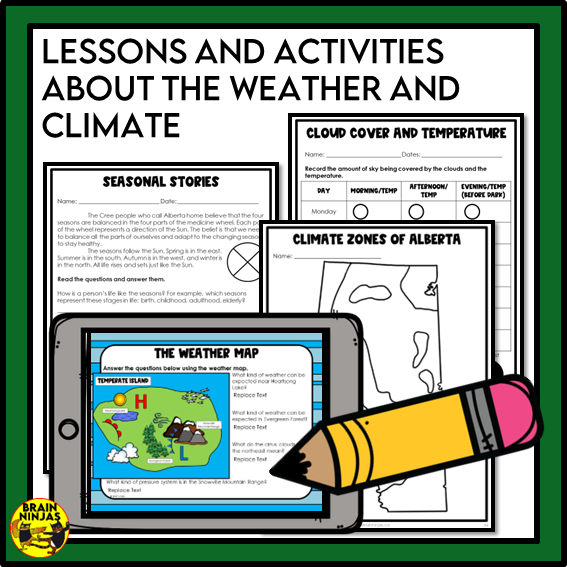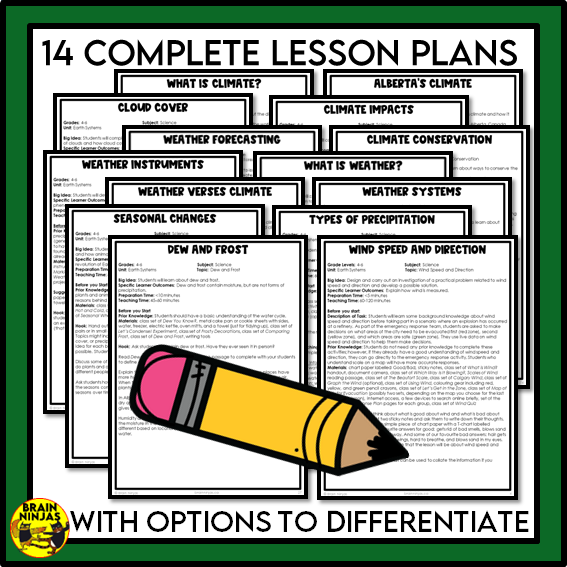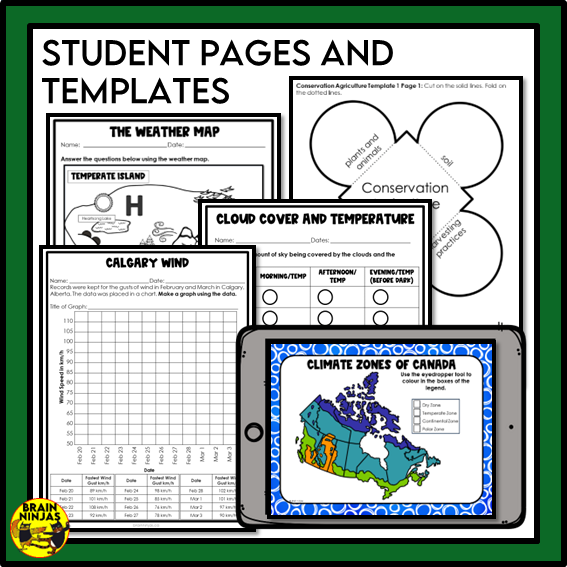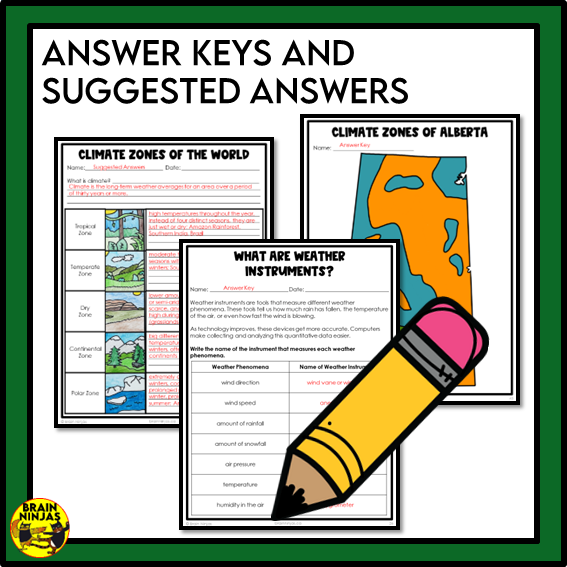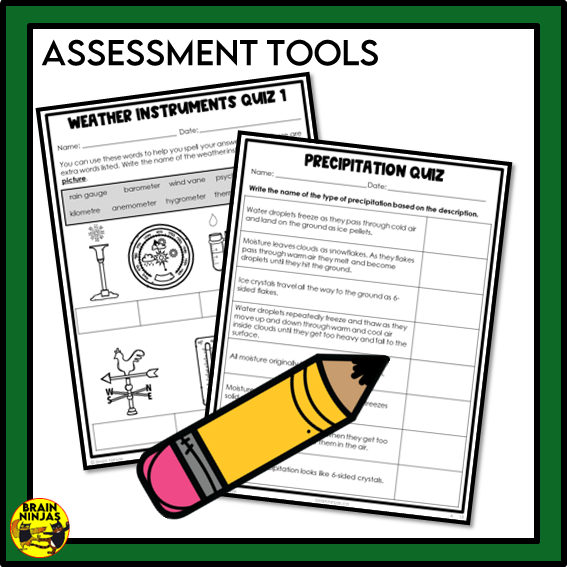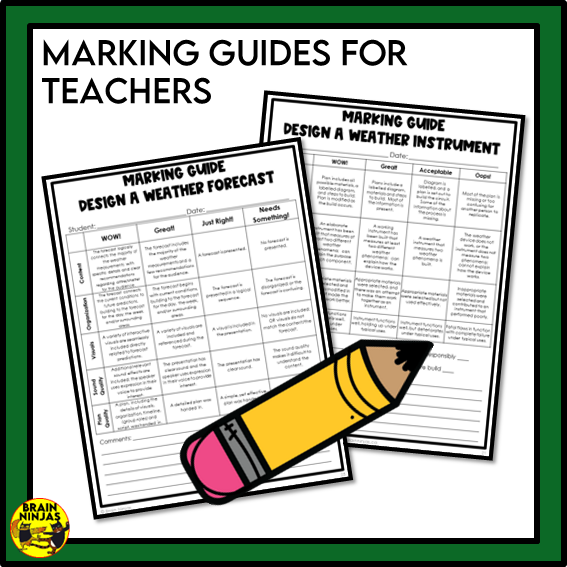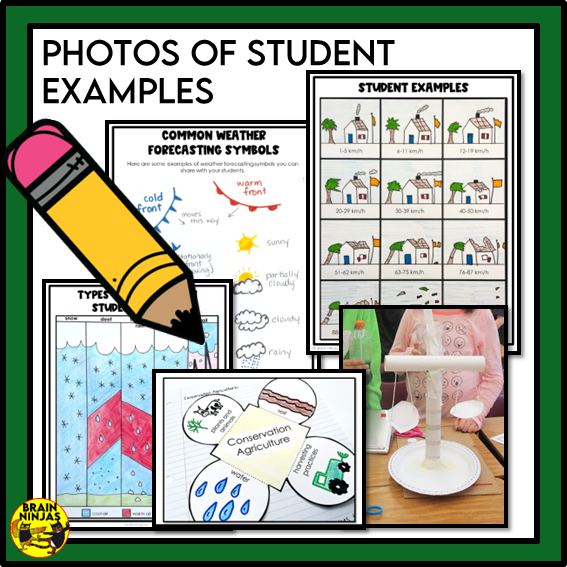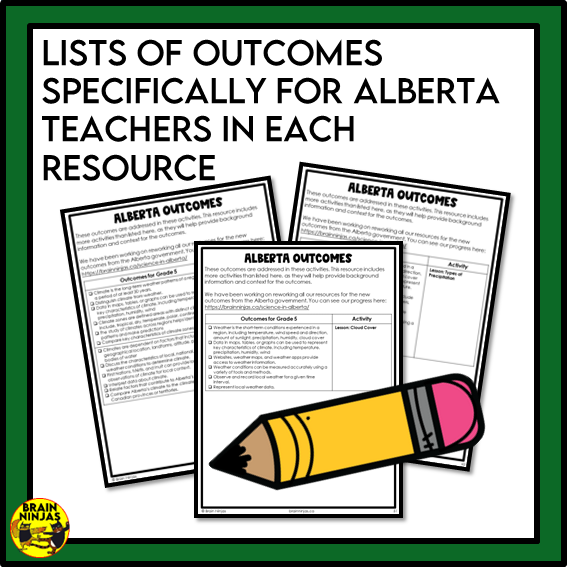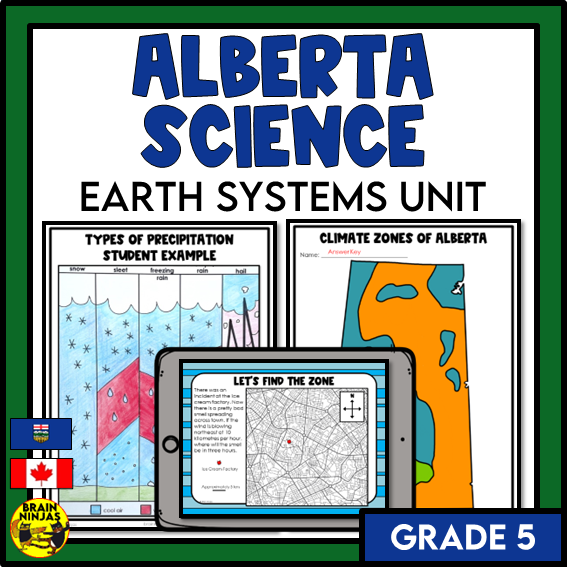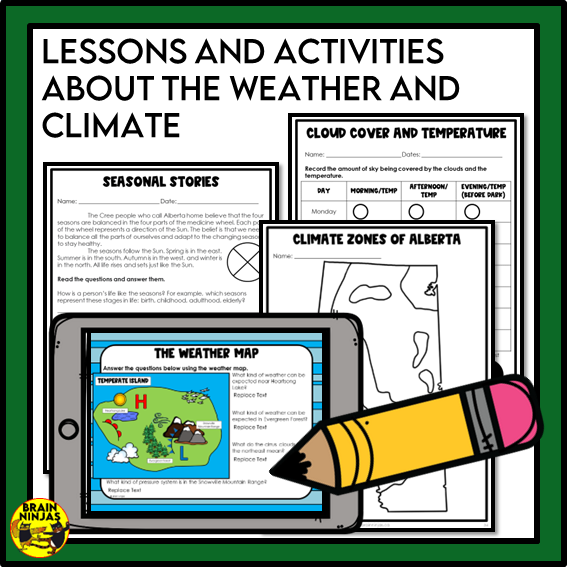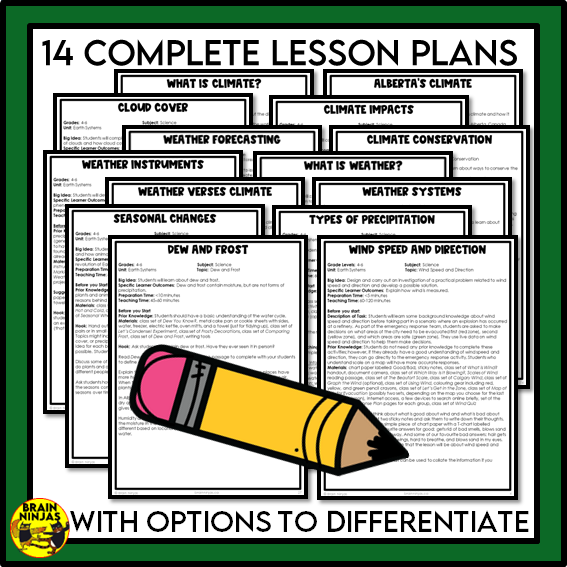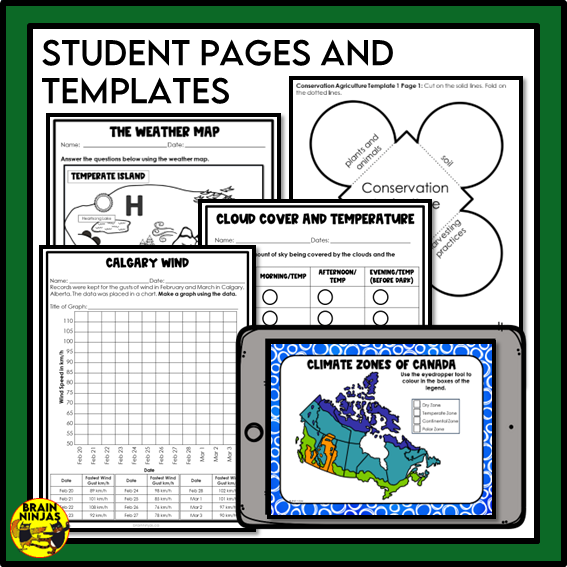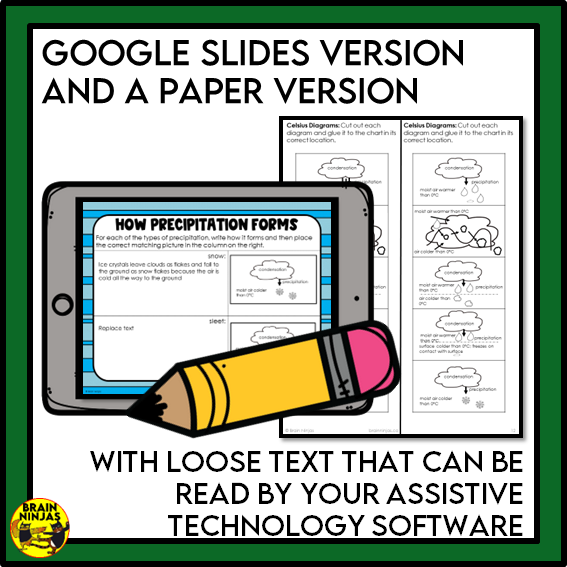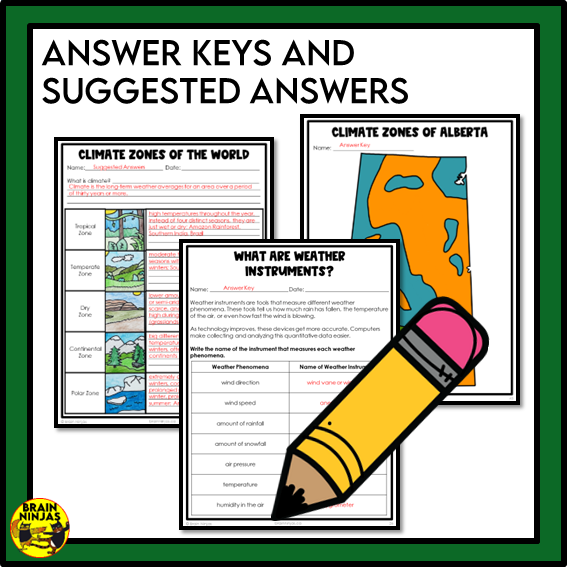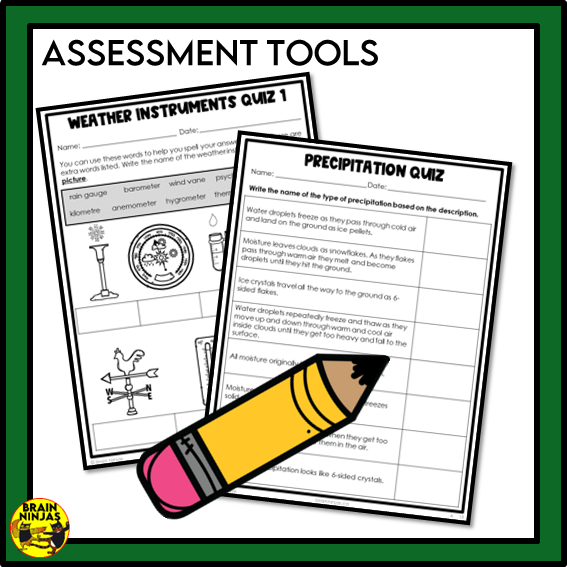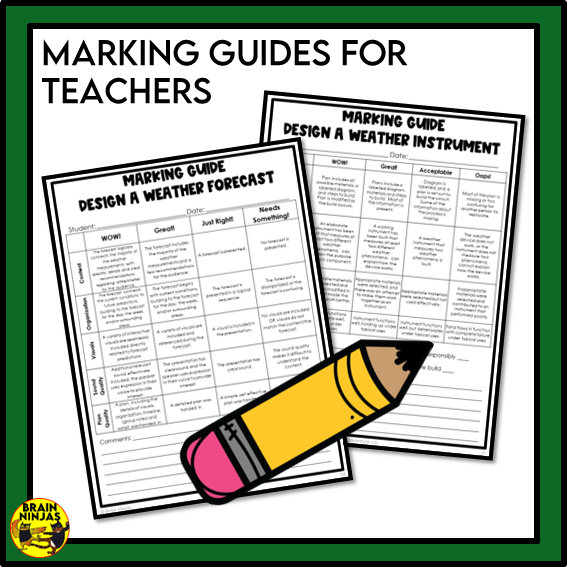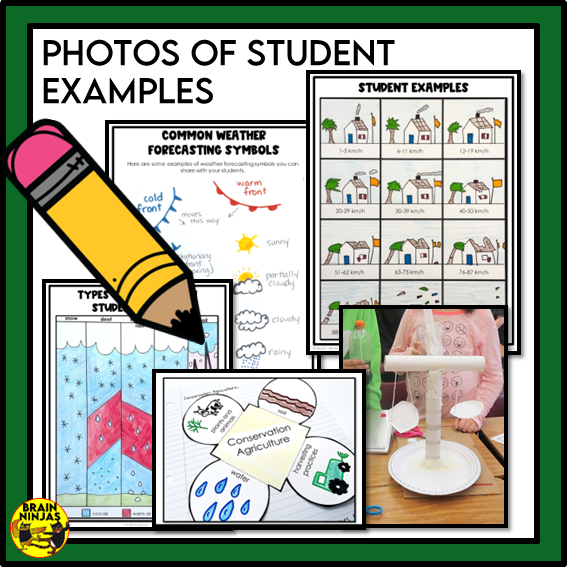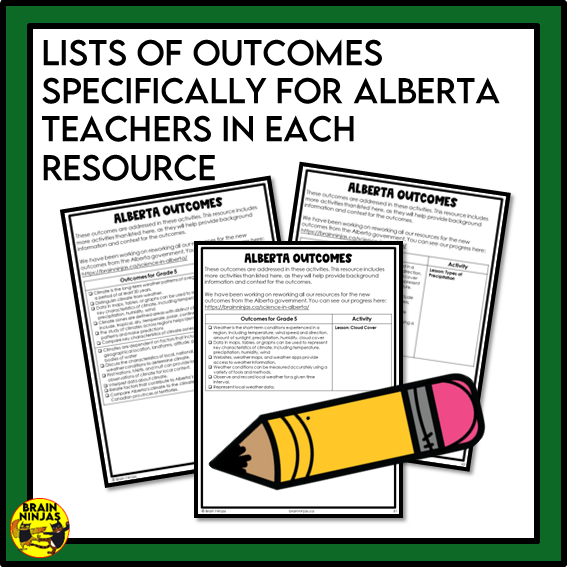Alberta Science Earth Systems Unit Grade 5 Bundle | Paper and Digital
Alberta Science Earth Systems Unit Grade 5 Bundle | Paper and Digital
Couldn't load pickup availability
Get a unit about earth systems planned in minutes. This unit includes all our resources for the Alberta science curriculum related to weather and climate through activities, experiments, and complete lessons. Everything you need to teach the whole unit is included!
This unit was designed specifically for Alberta Grade 5 science teachers. It includes:
- lesson plans with step-by-step instructions and options for modifications.
- background information for teachers.
- student pages and templates.
- answer keys and suggested answers.
- photos of student examples.
- ideas for how to use this resource in the classroom, online, or a mix.
- digital versions of all the student reading and writing pages that use Google Slides. You must download the PDF files and use the access links in the files to get your digital copies.
- an alignment guide for Alberta Outcomes in each resource.
- a unit plan and a list of Alberta Science outcomes to help with planning.
These resources are included in this bundle:
- Weather Patterns & Climate: an introduction to weather, weather phenomena, seasonal changes and how the rotation of Earth in the Solar System impacts seasons, how the position of the Sun impacts temperature, different ways to predict weather (modern and historical technologies), airflow and convection, differences between weather and climate, weather systems such as thunderstorms, blizzards, atmospheric rivers, polar vortexes, low-pressure systems, high-pressure systems, tornados, hurricanes, cyclones, droughts, floods, heatwaves, coldwaves, fronts, and so much more, weather symbols, maps and charts, comparing El Niño and The Pineapple Express, introduction to climate change and conservation.
- Types of Clouds and Cloud Cover: how clouds are formed, types of clouds: nimbus, stratus, cumulus and cirrus, recording types of clouds and cloud cover in the sky, and how cloud cover impacts temperature.
- Types of Precipitation: the definition of each type of common precipitation: rain, snow, sleet, freezing rain, and hail (and how they are created), dew and frost (and why they are not precipitation), and comparing hoar and rime frost.
- Wind Speed and Direction: wind speed and direction and how they are measured, scales of wind: Beaufort Scale, Douglas Sea Scale, Fujita Scale, wind measuring instruments for speed and direction: wind vane, wind sock, anemometer.
- Weather Instruments: weather instruments: rain gauge, snow gauge, thermometer, barometer, anemometer, hygrometer, wind vane and windsock, design a weather instrument STEM activity
- Alberta's Climate: definition of climate, global climate zones: tropical, dry, temperate, continental and polar, climate zones in Alberta and Canada (with maps), Alberta's climate data, how climate impacts humans, infrastructure, agriculture and animals, how humans, infrastructure, agriculture and animals impact climate, decisions that are made based on climate, types of biases, conservation agriculture: harvesting practices, how air, water and soil are conserved, and reading charts, tables, and maps.
- Weather Forecasting: common forecasting symbols and weather maps, ways to predict the weather, why weather prediction is important, and an open-ended project to design a weather forecast.
This resource aligns with:
- Alberta Science Curriculum © 2022 Grade 5 (new outcomes)
Do you teach science in Alberta? We have science units for you!
- Learn how we're adjusting resources to align with the new science curriculum in Alberta.
- Space Unit Grade 5
- Living Systems Unit Grade 5
- Earth Systems Unit Grade 5
- Matter Unit Grade 5
- Energy Unit Grade 5
- Computer Science Grade 5
-
Save 30% Alberta Science Grade 5 Full Year Bundle
Ninja Note: This file is a ZIP file. It contains all the PDF files that contain each unit. Buyers need to download the ZIP and extract the PDF files to a computer. To access the digital versions, download the PDFs and use the links in the files.
Have a question? Before contacting us, check our Frequently Asked Questions page.
